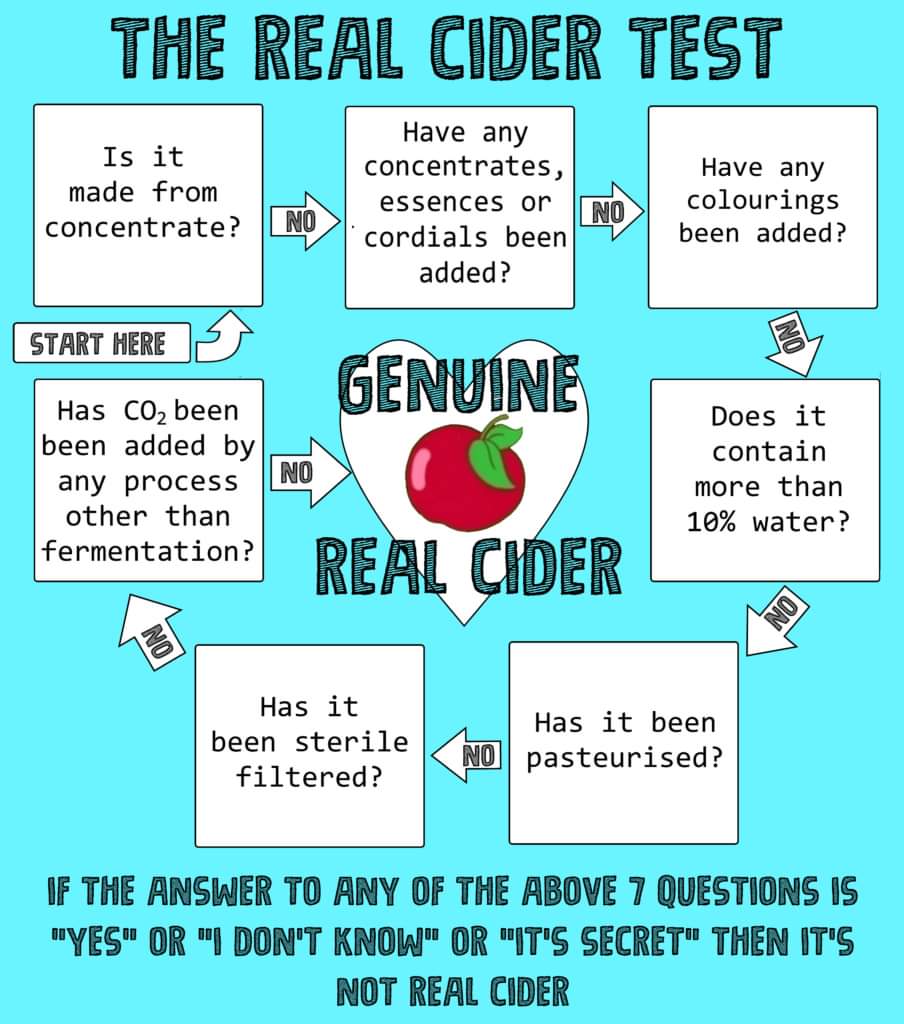Don’t worry, this isn’t a philosophical article on the fluid and hallucinatory nature of reality. This one is about the CAMRA definition of Real Cider, its flaws and its lack of enforcement.
So what actually do CAMRA mean by Real Cider? The answer to this, on the face of it is quite simple since (just as with Real Ale) CAMRA has a definition, in a nutshell it is a cider “made from the freshly pressed juice of apples, not syrup and not pasteurised or artificially carbonated”. You can and probably should go read the full definition here. So given how straightforward that seems why then is there such an enormous amount of confusion over what is and what isn’t a Real Cider?
If you think I’m exaggerating the level of confusion just take a look at the CAMRA Good Pub Guide app, there’s an option on the front page to search for nearby pubs with Real Cider, a list of local pubs will appear, press on one and then press on the apple logo under the ‘Features’ heading to get details of the Real Cider on offer. The top five results for my area offer Gwynt Y Ddraig Black Dragon, Westons Old Rosie, Thistly Cross (bottles), Old Mout (!) and finally Thatchers Heritage. Not a single one of these ciders meets the criteria of Real Cider as defined by CAMRA*. I’m not saying these are necessarily bad ciders of course, just that they aren’t Real Cider. Just imagine the outrage among CAMRA members if a pub listed for Real Ale was found to just be selling Heineken drawn through a hand pump? Yet there’s very little outrage (if any in fact) from CAMRAs many cider enthusiasts entering a pub recommended for it’s selection of Real Cider and being offered an Old Rosie or a Mango flavour Lilleys. The issue I believe stems from the widely held misconception that a Bag-in-Box cider is a Real Cider, and much like the assumption that Real Ale exclusively comes from a cask it is wholly incorrect.
The life of a Real Ale / Cider publican would be much easier if this were the case but it just isn’t. Real Ale is increasingly found in bottles, cans and KeyKegs. Real Ale is no longer definable by its storage / dispense method and neither is Real Cider. The added complexity this introduces can’t be overestimated but while all cask ale is Real Ale (as far as I know), all bag in box cider is certainly not Real Cider.
So how on earth are we supposed to know what is and isn’t real when it comes to cider? Should CAMRA provide a list of known Real Ciders? And could such a list even be maintained given how many products come and go throughout the year? Would guidelines or a crib sheet help? Should the guardianship of Real Cider be outsourced to a trade organisation such as SICA (Small Independent Cidermakers Association) or the NACM (National Association of Cidermakers)? Does it matter?
These are all difficult questions which will need to be addressed by the dedicated team of volunteers and enthusiasts at CAMRA over the coming months. In the meantime the best advice I could give publicans (and indeed beer & cider festival organisers) would be that Bag in Box doesn’t mean Real, you need to look beyond the container and don’t stop at pasteurisation.
One popular cider supplier Fetch The Drinks have a tab on their website which allows you to see only un-pasteurised ciders, if they added a handful more parameters to that option then they would be making it extremely easy for customers to buy Real Cider from them.
I’ve made a short “Real Cider Test” detailing seven simple questions that need to be answered to ensure you’re getting cider that is compliant with the current CAMRA definition of “Real Cider”

Good luck hunting down the Real stuff everyone.
Cheers,
Ryan.
*Failing to qualify on grounds of Concentrate use, Pasteurisation, colourings, filtration and water content.
